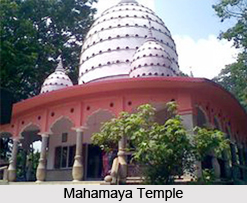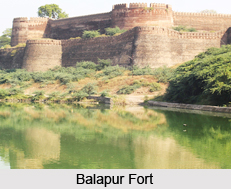 Shanti Stupa is a well-known Buddhist temple and monastery in Darjeeling, West Bengal. The pagoda stands as the symbol of spirituality and peace. The temple was built under the supervision of Nichidatsu Fujii (1885-1985), who was a Buddhist monk from Japan and who is also revered as the founder of the Nipponzan-Myohoji Buddhist Order. According to the Lotus Sutra, the very appearance of the Shanti Stupa is an embodiment of Lord Buddha that radiates peace and non-violence. It purifies the land as well as the mind and soul of the people. Shanti Stupa in Darjeeling is open to people of all races and creeds and is purposely made to propagate peace and prosperity in the world.
Shanti Stupa is a well-known Buddhist temple and monastery in Darjeeling, West Bengal. The pagoda stands as the symbol of spirituality and peace. The temple was built under the supervision of Nichidatsu Fujii (1885-1985), who was a Buddhist monk from Japan and who is also revered as the founder of the Nipponzan-Myohoji Buddhist Order. According to the Lotus Sutra, the very appearance of the Shanti Stupa is an embodiment of Lord Buddha that radiates peace and non-violence. It purifies the land as well as the mind and soul of the people. Shanti Stupa in Darjeeling is open to people of all races and creeds and is purposely made to propagate peace and prosperity in the world.
Location of Shanti Stupa
Shanti Stupa is located in the town of Darjeeling in the Indian state of West Bengal. The Pagoda is situated on the slopes of the Jalapahar hills of Darjeeling, a few kilometres from the town of Darjeeling.
Structure of Shanti Stupa
Shanti Stupa in Darjeeling features traditional Japanese architectural style. The height of the pagoda is 28.5 metres (94 ft) and diameter is 23 metres (75 ft). The temple houses 4 shining and gold-polished statues of Lord Buddha. Also, the walls of the Shanti Stupa have 8 sandstone carvings which depict different stories from the different stages of Gautama Buddha"s life. There are mythological depictions like "Gift of Mango Grove by Amrapali at Vaishali" and "Great departure of Siddhartha".
The foundation stone of the Shanti Stupa in Darjeeling was laid on 3rd November 1972 by Nichidatsu Fujii, and was inaugurated on 1st November 1992. The stupa was designed by M. Ohka and took about 20 years to build; i.e. from 1972 to 1992.
Shanti Stupa is one of the most popular destinations and a monument in Darjeeling. The temple is open from 4.30 am morning to 7pm in the evening. There is no admission fee for entering the Shanti Stupa.
This article is a stub. You can enrich by adding more information to it. Send your Write Up to content@indianetzone.com




